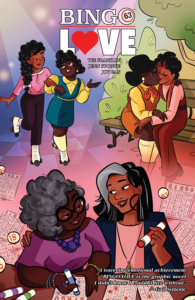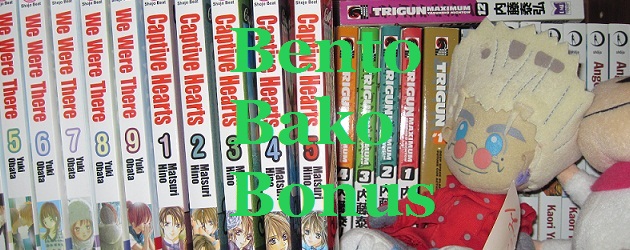 Bingo Love
Bingo Love
Publisher: Image Comics
Writer: Tee Franklin
Artist: Jenn St-Onge
Colorist: Joy San
Letters: Cardinal Rae
Cover: Jenn St-Onge & Joy San
Bingo Love is a graphic novel I’ve had my eye on since it originated as a Kickstarter project in 2017. As a result, I was excited to learn the title will be released on Valentine’s Day 2018 from Image Comics. Bingo Love is a diversity goldmine as the story is “own voices” – written by a queer woman of color, and filled with characters of all hues, shapes, and sizes. Jenn St-Onge is the artist for this project. You may have seen her work on Giant Days and Jem & The Misfits. Her talent stands out with vivid colors and a warm art style that focuses on round edges and soft curves. It’s the kind of artwork that gives readers the warm and fuzzies.
Joy San’s coloring is spot on with excellent depictions of varying skin tones, hair textures, and more. The colors are vibrant and pair perfectly with the tone of the plot line. St-Onge does a great job of showing varying styles of dress and the changes in the characters as they age throughout the years. One thing I love about her art style is that she knows how to make women of all races, body types, and style profiles look edgy, fashionable, and beautiful in their own way.
The storyline chronicles the journey of two African-American women spanning several decades as they navigate the trials of being queer throughout the years. We start with a woman in crisis confiding in her friend that she has been kicked out of her home after being outed to her parents. From there we travel through the years as our main protagonist, Elle, recounts her story as it began in 1963.
Some of the things I liked best about this story is that Franklin highlights the role that the African-American religious community has played in discriminating against LGBTQ+ people. The story did a lot to discuss how sin and religion were used as tools to denigrate queer Black people, despite the sexual misdeeds of so-called Christian folks. This story shows how, due to familial and societal pressure, LGBTQ+ people were forced to live in the closet, even going so far as to marry and start families so they are not completely ostracized from their communities.
Even beyond the issue of being queer, the story depicts how some women of that generation gave up on their dreams to raise a family and became defined by their roles as mother figures. The result was that some women suffered feelings of emptiness and unhappiness, despite outward appearances. Franklin writes about the complications of being truthful with ourselves and our families. She highlights how we can deceive ourselves and others, until we’re confronted with the things that really bring us joy. This story shows how difficult it is to dismantle those deceptions once years have passed and public perception is firmly entrenched. However, her story also shows how, despite the initial pain and ugliness, families can adapt, adjust, and keep loving one another.
There’s a nice, heart wrenching twist at the end of this story that I think readers will appreciate. It was the Black queer fairy tale I didn’t know I needed. It was beautifully told with gorgeous art and I can’t wait to see more work from this team of creators.
Frankie Reads



